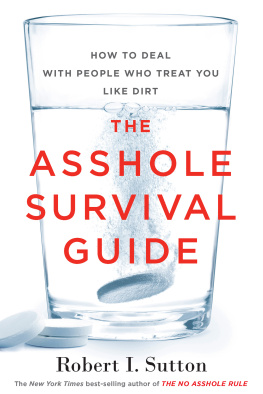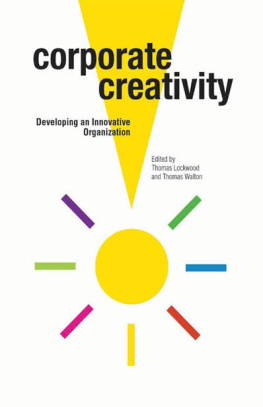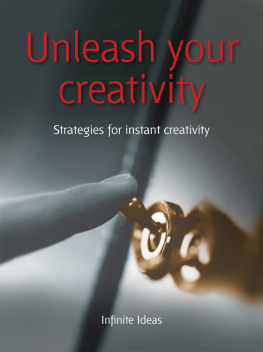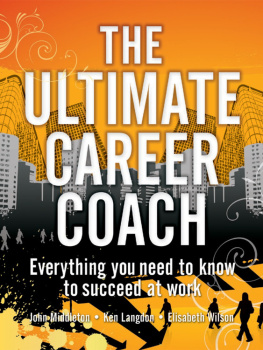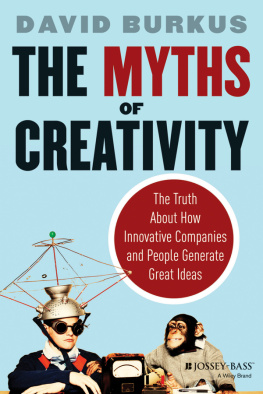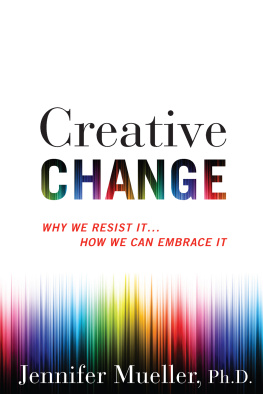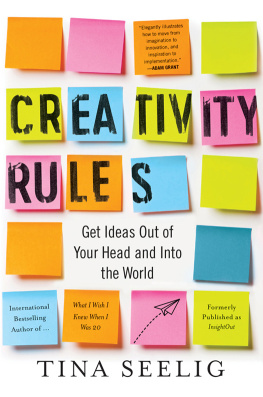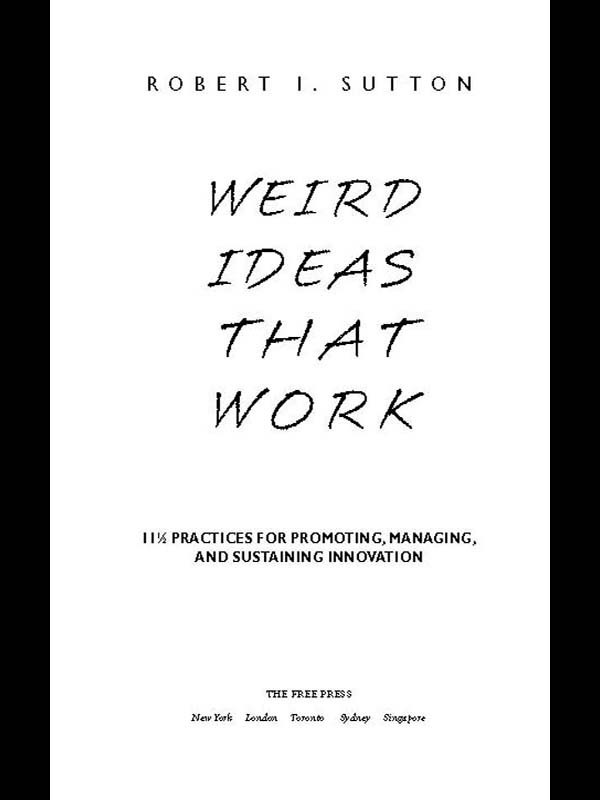
Also by Robert I. Sutton
THE KNOWING-DOING GAP:
How Smart Companies Turn Knowledge Into Action
with Jeffrey Pfeffer

THE FREE PRESS
A Division of Simon & Schuster Inc.
1230 Avenue of the Americas
New York, NY 10020
Visit us on the World Wide Web:
http://www.SimonSays.com
Copyright 2002 Robert I. Sutton
All rights reserved, including the right of reproduction in whole or in part in any form.
T HE F REE P RESS and colophon are trademarks of Simon & Schuster Inc.
ISBN-10: 0-7432-1545-1
ISBN-13: 978-0-7432-1545-9
To Annette and Lewis Sutton, for teaching me the hazards of comparing myself to others and for putting up with me when I was an obnoxious teenager.
PART I
WHY
THE
WEIRD
IDEAS
WORK
CHAPTER 1
Why These Ideas Work,
but Seem Weird
To invent, you need a good imagination and a pile of junk.
Thomas Edison
The question is not what you look at, but what you see.
Henry David Thoreau
I realized that my competition was paper, not computers. 1
Jeff Hawkins, describing the key
insight that led his team to
design the Palm Pilot
I ADMIT IT. I call the novel ideas in this book weird to get your attention. After all, unexpected, even strange, management practices are more fun and memorable than bland old ideas. But there is another reason these ideas may seem counterintuitive: To innovate, companies must do things that clash with accepted management practices, with common but misguided beliefs about the right way to manage any kind of work. In company after company, managers act as if they can keep developing new products, services, and solutions by adhering to customary ways of managing people and making decisions. This happens even in companies where managers say that innovative work requires different practices than routine work. Yet these same managers continue to use methods that force people to see old things in old ways, expecting new and profitable ideas somehow to magically appear.
Last year, for example, I had a long conversation with an executive who wanted some ideas about sparking innovation in a multibillion dollar corporation in a mature industry. I cant reveal the company, but I can tell you it was a book publisher. Profits were falling, and so was the stock price. Wall Street analysts were complaining that the company wasnt innovative enough. This executive was exasperated because her company, especially the CEO, hates taking risks, and she believed that other senior managers wouldnt back any program that might fail or distract people in the core businesses. She especially emphasized that any program that might further reduce quarterly profits would be unacceptable, even if it had long-term benefits. The CEO and other senior executives were convinced that the business practices they were using to do the companys routine work, the things they did to make money right now, could somehow generate profitable new products and business models.
These executives were dreaming an impossible dream. To build a company where innovation is a way of life, rather than a rare accident that cant be explained or replicated, people need to discard, and often reverse, their deeply ingrained beliefs about how to treat people and make decisions. They need to follow an entirely different kind of logic to design and manage their companies, even though it may lead them to do things that some peopleespecially people focused on making money right now find to be counterintuitive, troubling, or even downright wrong.
Trying to spark innovation with methods that actually stifle it doesnt happen just in big, old companies. Entrepreneurs start new companies partly because they are purported to be more innovative, free from the pressures in established firms to follow ingrained precedents. Yet, after coaching start-ups for over 20 years, James Robbins finds that entrepreneurs can fall prey to ingrained habits just like managers in big firms. Long before it was a fad, Robbins was creating and managing new business incubators, including an Environmental Business Cluster in San Jose and in Wuhan, China, the Software Business Cluster in San Jose, the Panasonic Incubator in Santa Clara, and the Womens Technology Cluster in San Francisco The software Business Cluster has been especially successful since it was started in 1994. It has nurtured more than 50 new companies, which have attracted over $300 million in funding.
Robbins coaches the entrepreneurs in these incubators to build companies that generate, rather than stifle, new ideas. A sign in his officethe only sign I sawsays: The definition of insanity is doing the same thing over and over and expecting a different result. He posts it because so many entrepreneurs suffer from this kind of insanity, which makes it impossible to do anything new. These people are not crazy when they do the same thing over and over again, but expect to get the same result. That is the right way to manage routine work, to make the future a perfect imitation of the past. But repeating the same old routines again and again in pursuit of innovation is pure insanity.
Practices that are well-suited for cashing in on old, proven ways can make innovation impossible. To thrive and survive in the long term, companies must keep inventing (or at least keep uncovering) new ways of thinking and acting.
Organizing Principles for Routine versus Innovative Work
The difference between organizing for routine versus innovative work can be seen by contrasting cast members at Disney theme parks with the Imagineers at Disney Imagineering, the companys research and development facility in Burbank, California. The job titles are revealing metaphors for the two kinds of work. Cast members in theme parks follow well-defined scripts; Imagineers dream up wild ideas about new things that guests might experience. Whether they are dressed as Cinderella or Goofy, acting as guide on the Jungle Cruise, or sweeping the streets, precise guidelines are enforced to ensure that cast members stay in role when they are on stage. This is Disneys routine work. In contrast, Disney Imagineering is a place where people are expected to keep trying different things, where creativity is the goal. As one former Imagineer put it: Youre encouraged to come up with all these great fantasies. Most of your ideas are never executed into reality. That is frustrating sometimes, but protecting the brand, creating compelling guest experiences, and telling great stories are important. The romance is still there. Where else are you asked to come up with wacky ideas for the next great ride for Disneyland!?
Stanfords James March expresses this difference as: exploiting old ideas versus exploring new possibilities. 2,3 Exploiting old ideas means relying on past history, well-developed procedures, and proven technologies to do things that generate money right now. Exploiting old ideas happens when McDonalds makes and sells a Big Mac hamburger. Billions of Big Macs have been made in the past, so unless they ask for something special, customers expect all Big Macs to look and taste the same. McDonalds goal is to use old knowledge to make the next Big Mac exactly the same as the last one.
March points out that, in the long run, no company can survive by relying only on established and proven actions. To make money later, companies need to try new things, to explore new possibilities. This means experimenting with new procedures, hiring new kinds of people, and inventing and testing new technologies. 4 New ideas need to be invented (or imported) to satisfy customer demands, to enter new markets, to gain an advantage over competitors, or at least to keep pace. McDonalds uses some of the cash from all those Big Macs to explore new possibilities. The question is not whether McDonalds or any other company should do exploration or exploitation. It is silly to argue about whether a company should do only one or the other; its like arguing over which is more important for an automobile, the engine or the transmission, or which you need more, your heart or your brain. Both are necessary for moving forward. The real question is what proportion of the firms time and money should be spent on which.
Next page

